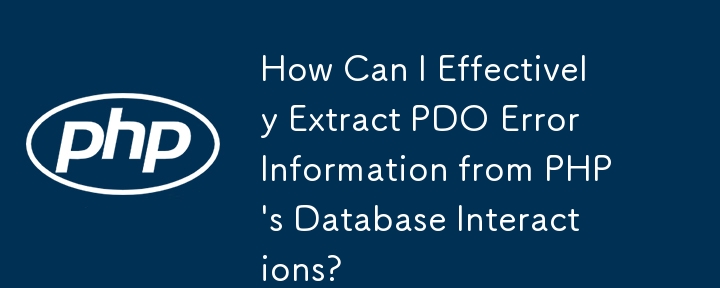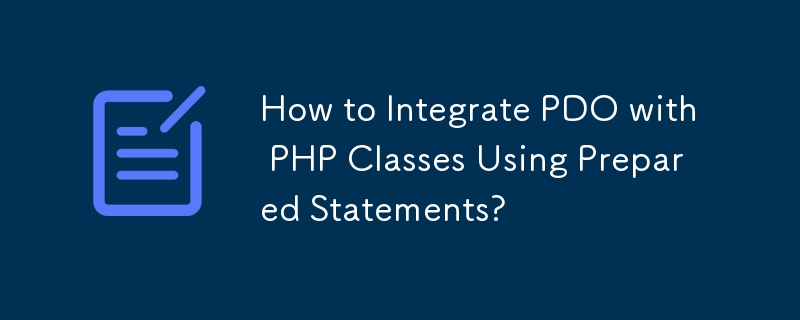Found a total of 10000 related content
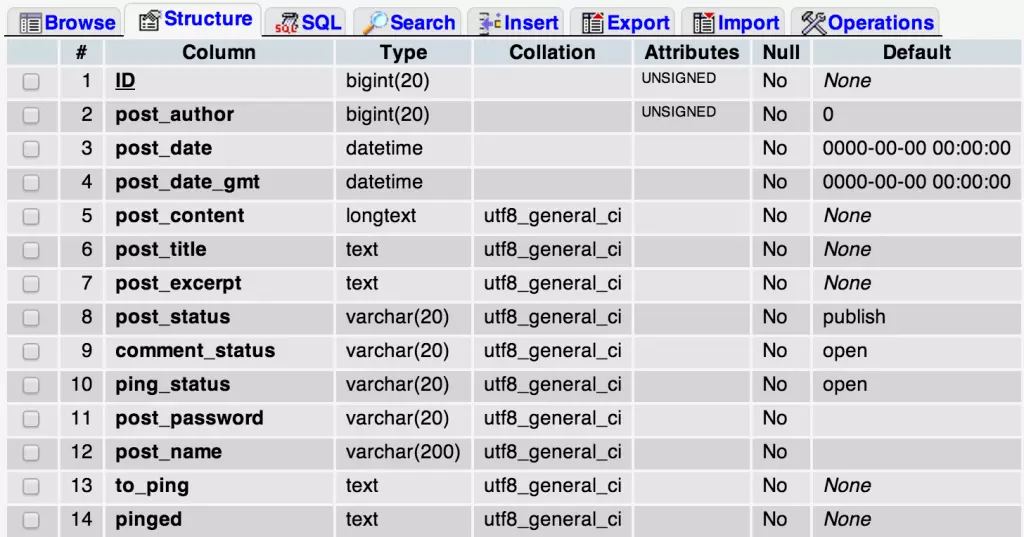
Working with Databases in WordPress
Article Introduction:WordPress database interaction guide: mastering wpdb class and database operation skills
WordPress comes with a large number of database interaction functions. WP_Query class and wp_insert_post, update_post_meta, get_posts and other functions are usually enough to deal with most situations. However, especially when dealing with custom tables, we sometimes need to do things that cannot be achieved by WordPress native features.
This tutorial will explore the most important class in WordPress database interaction - wpdb, and share some development tips. We will introduce the dbDelta function used to create custom tables, but will not cover creating initial Word
2025-02-15
comment 0
413


Understanding Drupal's EntityFieldQuery
Article Introduction:Key Takeaways
EntityFieldQuery is a class in Drupal that allows developers to fetch information about entities from the database without having to write SQL queries, making it easier to retrieve, filter, and sort data. This is particularly useful
2025-02-22
comment 0
1180

How to batch replace strings
Article Introduction:Navicat's batch replacement string function allows one-click replacement of specific strings in a large number of database records to improve management efficiency. Specific steps: connect to the database, open tables, write SQL statements (optional), or use a graphical interface; specify the target field, find/replace strings; click OK to complete the replacement. Be careful about backup, testing and operation with caution to avoid data loss.
2025-04-08
comment 0
690

How to connect PHP script to MySQL database
Article Introduction:In online form development, connecting PHP code with MySQL database is a common operation. User form data needs to be collected and added to the database. This article introduces two commonly used PHP and MySQL database connection methods.
PHP and MySQL database connection
To connect MySQL database to PHP, you need to install MySQL, database management tools and PHP on your computer. The two most commonly used connection methods are MySQLi and PDO.
First, we introduce the easier MySQLi to use.
First create a MySQL database, here we use TablePlus. TablePlus is a convenient database management tool that handles a variety of databases in a single interface. Through its user-friendly interface,
2025-04-11
comment 0
732
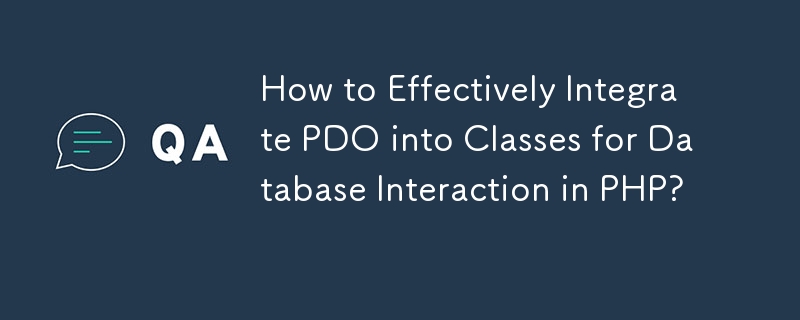
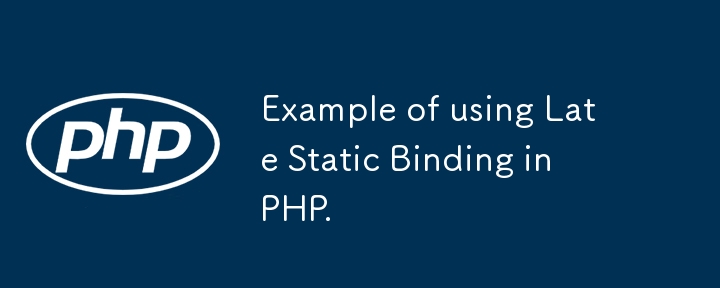
Example of using Late Static Binding in PHP.
Article Introduction:Delayed static binding in PHP: flexible database queries
Lazy static binding (LSB) is a feature in PHP that allows a subclass to reference a static property or method of its parent class using the static keyword. This makes it possible to implement dynamic behavior in classes, which is especially useful in inheritance and subclass functionality customization. The core of delayed static binding lies in the use of the static keyword: when the PHP interpreter encounters the static attribute when compiling a function, it will delay determining its value until runtime. The value ultimately comes from the class that calls the function.
Application scenario: dynamic database query
Suppose you are developing a web application with a database. You have a Database base class that contains the methods for interacting with the database
2025-01-16
comment 0
832


How to build a SQL trigger
Article Introduction:SQL triggers are database objects that automatically perform operations when a specific event occurs. Create a trigger consists of the following steps: Select the trigger type: BEFORE, AFTER, or INSTEAD OF Specify the trigger event: INSERT, UPDATE, or DELETE Write the trigger code, specifying the operation to be performed to create the trigger using the CREATE TRIGGER statement.
2025-04-10
comment 0
749

Explain Laravel Database Migrations.
Article Introduction:Database migration is a version control tool in Laravel for managing database structure changes. It allows the use of PHP code to define and synchronize table structures to avoid manual operation of the database. 1. The migration file contains methods for up() to perform changes and down() rollback changes; 2. Use the Schema builder and Blueprint class to create tables and fields, and support common types and constraints; 3. Common Artisan commands include migrate run, rollback rollback, reset reset, refresh refresh, and make:migration to generate new files; 4. The recommended practice is to not modify the running migration, but create new files for adjustments, and fill data with factories and seeds.
2025-07-22
comment 0
731

How do I use the MVC (Model-View-Controller) architectural pattern in PHP?
Article Introduction:How to use MVC mode in PHP? 1. Set the basic file structure and create three folders: Model, View and Controller; 2. Write model processing logic, such as UserModel class operating database; 3. Create controller to receive requests and coordinate model and view, such as UserController obtaining data; 4. Build view display content, such as user_profile.php mixing HTML and PHP output dynamic data; 5. Unified request processing through the front-end controller index.php, loading the model and controller and executing corresponding methods to achieve application scalability.
2025-06-21
comment 0
766

How Navicat batch modify digital data
Article Introduction:Navicat batch modification method: Use SQL statements: directly write UPDATE statements to modify. Use the query generator: graphical interface operation, suitable for users who are not familiar with SQL statements. Import and export combined with modification: suitable for a large number of complex modifications. Avoiding the pit: Backup the database. Small-scale test. Use transaction processing. Clear the conditional statement. Data type matching.
2025-04-08
comment 0
358

How to write unit tests for WordPress code
Article Introduction:Writing WordPress unit tests requires using PHPUnit and WordPress test suites. 1. Set up the environment: Install PHP and Composer, install PHPUnit through Composer, clone the wordpress-develop repository, configure a dedicated database, and use wpscaffold to generate test files. 2. Understand the test structure: inherit the WP_UnitTestCase class, the test method starts with test_, and use the factory class to create test data to avoid real HTTP requests. 3. Write effective tests: cover normal and boundary situations, verify function behavior, hook triggers, and shortcode output, keep the test independent and focused. 4. Run and debug:
2025-07-25
comment 0
237

How to create a custom session handler in PHP?
Article Introduction:In PHP, custom session processing mechanism requires implementing the SessionHandlerInterface interface and registering handler. 1. Implement six core methods: open(), close(), read(), write(), destroy() and gc() to complete the session storage logic; 2. Create a custom handler class instance and register it through session_set_save_handler(); 3. Call session_start() before use to start the session. Suitable for improving performance, centralized management and extension functions. It is recommended to pay attention to permission control, concurrency problems and security protection to ensure the correct operation of GC and ensure the sess
2025-07-14
comment 0
959

Configure Apache to connect to PostgreSQL database
Article Introduction:The steps to configure Apache to connect to PostgreSQL database include: 1) Make sure Apache has installed the PHP module and enabled in the configuration file; 2) Write code to connect to PostgreSQL in PHP scripts; 3) Use ORM tools such as Doctrine to simplify database operations. Through these steps, you can successfully configure Apache to PostgreSQL connections and apply this knowledge in real-world projects.
2025-05-21
comment 0
639

What is the role of the oplog (operations log) in MongoDB replication?
Article Introduction:Oplog is the key mechanism for MongoDB replica set to implement data synchronization. It is a special cappedcollection in the local database, with its full name operationslog, which records all write operations on the main node (such as insertion, update, and deletion), including timestamps, operation types, target collections, and modification contents. The slave node remains consistent with the master node by copying and replaying these operations. For example, after the master node performs an insert operation, the operation will be recorded in the oplog, and the slave node reads and performs the same operation to achieve synchronization. The functions of Oplog include: 1. Become the basis for data synchronization, pull and execute oplog entries in sequence from nodes to achieve asynchronous replication; 2.
2025-07-14
comment 0
422



